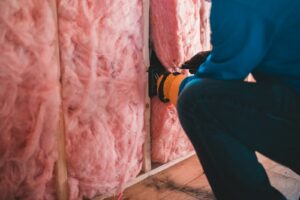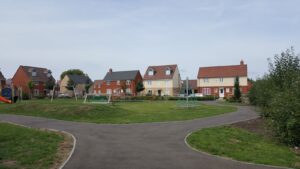Places, stories and myths
Q: What makes places last?
A: Guided busways, fog-basking beetles, people and myths
In the second of this year’s 4×4 debates an architect, a planner, a programme director and a poet gathered in Leeds Met last week to debate the question: What makes places last?
Peter Studdert, director of joint planning across Cambridgeshire’s three councils, is trying to create new long-lasting towns for the area. Cambridgeshire is expanding, but not always in the most sustainable ways. Cambourne, the region’s newest new town, is less than ten year’s old, but is already showing its cracks.
A town built around cars, it had few local facilities for its early residents, many of whom are now looking for the exit. For the planning of Northstowe, a proposed new town five miles outside of Cambridge, the lessons have been learnt. The longest guided busway in the world is due to open in the region this summer, and will be the main public transport link for Northstowe.
A third of the new town will be made up of open spaces, with schools and other facilities within easy reach. Studdert’s model for the ideal of sustainability is Freiburg in Germany, where low-energy buildings and car-free streets are the norm and where 40% of the houses are self-built by co-ops, a model to which the UK could turn as the failed housing market looks for new solutions.
Sustainability is passé according to Michael Palwyn an architect at Exploration, specialising in ‘restorative’ architecture and biomimicry. Biomimicry is architecture that draws its inspiration from nature. His plans for Las Palmas Water Theatre take inspiration from the Namibian fog-basking beetle, which has evolved to create its own fresh water in the desert.
The building itself creates fresh water from seawater, a building that not only works with nature but gives back to nature, a building that is a net producer rather than a static consumer. His ideas seem fantastical but they could just be the future.
Miranda Plowden, programme director for neighbourhoods at Sheffield City Council, spoke up for people-centred place-making as she talked the audience through the Southey Owlerton Area Regeneration plan for north Sheffield.
Ian McMillan meanwhile, is interested not in buildings or beetles but in words and myths. Poet in residence at the Academy of Urbanism and numerous other institutions, he is also a lifelong resident of Darfield, Barnsley. What makes a place last is its ability to become somewhere around which stories are told and myths are made. McMillan still wakes up at 4.30 am to the sound of milk bottles clinking, even though his local milkman retired five years ago.
His parents met as penpals when his father was a Scottish seaman and his mother sent letters to his ship full of fantastical tales of the beauty of the former coal town in which she was born. McMillan now takes his grandson to the museum of local transvestite Maurice Dobson, who wanted his life to be immortalized in the town in which he lived.
It is stories such as these, the myths that people create about their lives that make places last, he says. ‘We are all tied up in place’, he said, urging the audience of architects, planners and students to create new places in which myths and stories can flourish.
For details of 4×4 debates see: www.makingplaces.com















